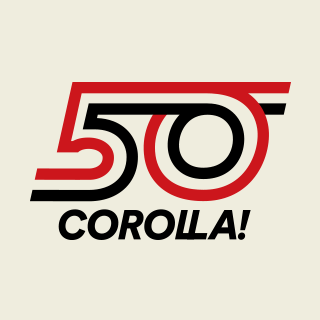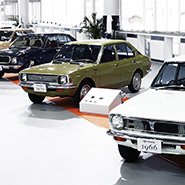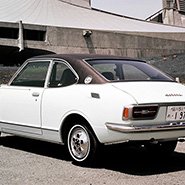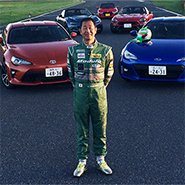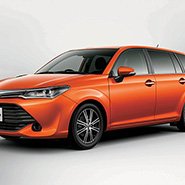Nov. 02, 2016
Generations of the Corolla and their Corresponding Eras (1)
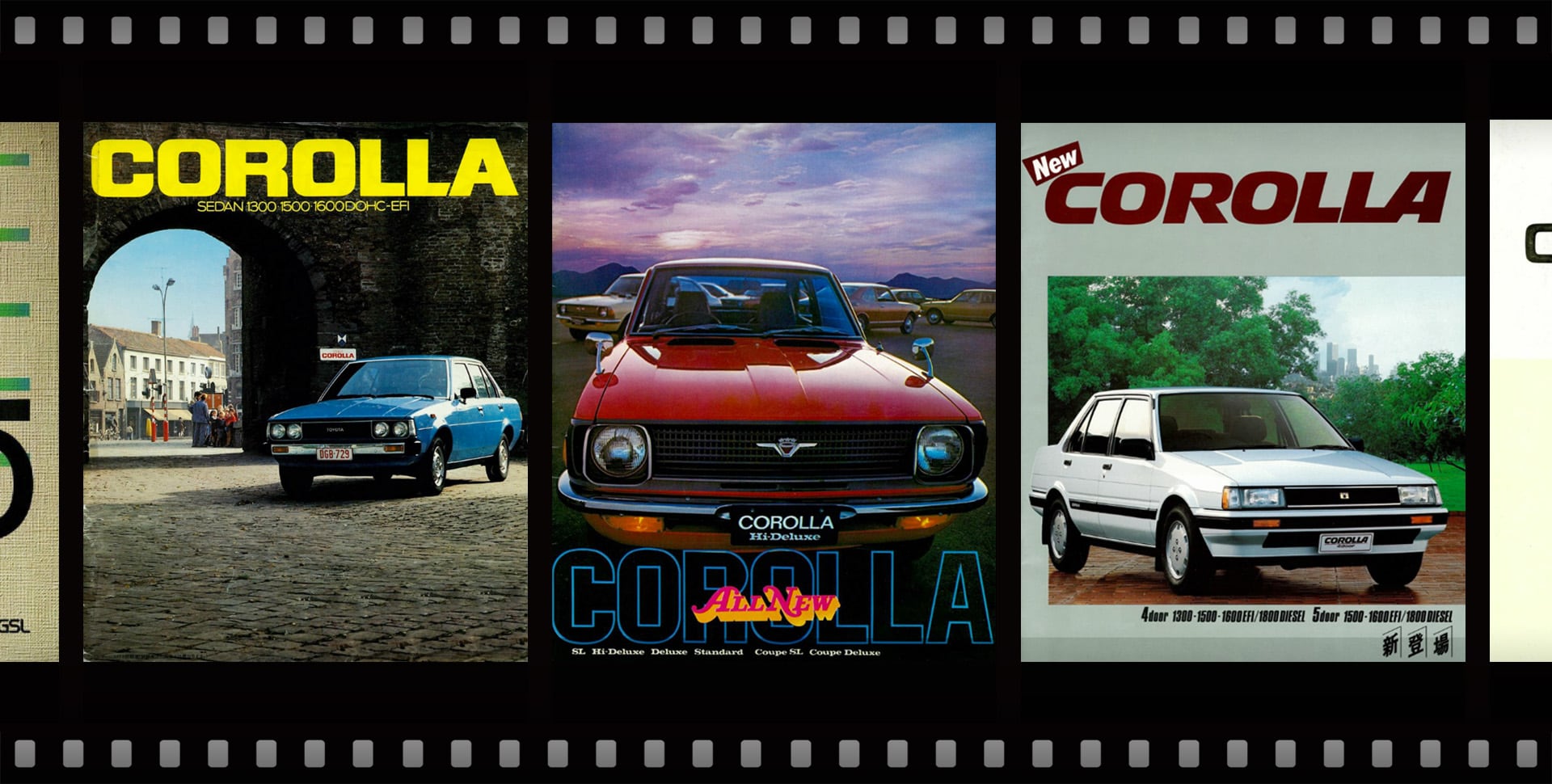

The Second Generation Corolla: An Evolution in Driving and the Arrival of a Sports Car Model
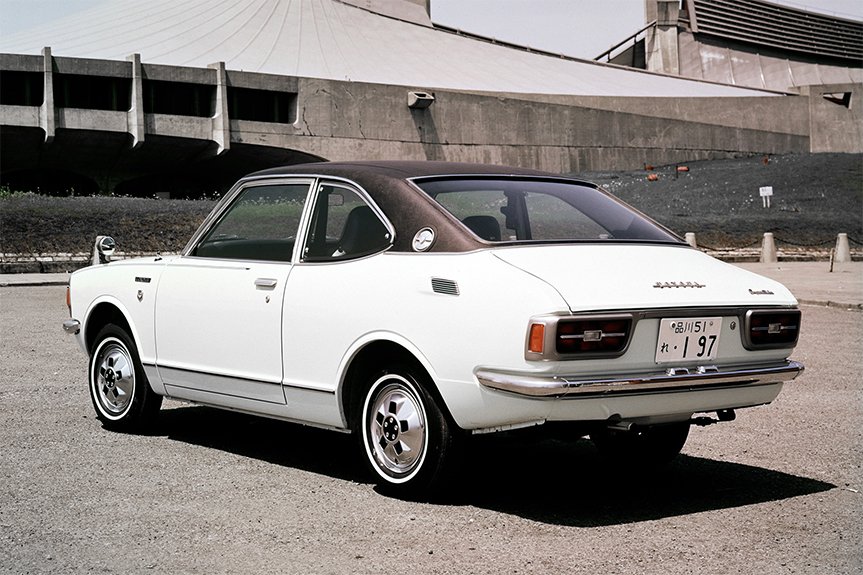
The first generation Corolla became a major hit when it had arrived, exceeding a total production volume of 1 million cars. The arrival of the second generation represented a further increase in performance over the original. With a slightly larger size, the second generation featured both two and four door models. Furthermore, with the increased package size, the second generation provided for a more spacious interior, but it was the major evolution in driving performance that helped garner the most attention. The engine also increased from 1.1 to 1.2 liters using the 3K model. There were three types, which covered a range of compression ratios and the number of installed carburetors. There was also an additional 1.4 liter model, and the twin carburetor SR grade boasted 5-speed manual transmission and a fixed underbody. There was also a derivative sports car model that was released, known as the Levin and Trueno, which had an added overfender and a 2T-G 1600cc DOHC engine.
1970: Dreams for the Future at the Japan World Exposition in Osaka
While there continued to be headline-grabbing incidents such as the hijacking of Japan Airlines Flight 351 by the Japanese Red Army, and the suicide of author Yukio Mishima, this period also saw student demonstrations, which had peaked in the 1960s, dwindle down. This was the era of the “three noes” – “no drive, no interest, and no responsibility.” However, it was also a time which saw the finishing touches to Japan’s period of rapid economic growth, which was represented by the Japan World Exposition in Osaka. With the main venue being located at Senri Hills of Suita City, Osaka, the exposition - which coincided with the progress of the Apollo program, was themed “Progress and Harmony for Mankind.” Seventy-seven countries participated in the exposition. The event captivated the country with a total of roughly 64.22 million visitors, the equivalent of over half of Japan’s population at the time.
The Third Generation Corolla: A Larger Body to Meet Regulations for Collision Safety and Emissions

While still carefully maintaining the overall image of the first generation, the third generation introduced a more stylish design. The body size was increased yet again to a level matching the top class Corona, so as to ensure collision safety performance. With an engine system and grade lineup that followed the precedent set by the second generation, the 1.2 liter model featured an improved version of the 3K model engine from the previous generation. The automatic transmission was also upgraded from two to three speeds, in answer to the increased demand for easy driving. In addition to the two and four door sedans and a two-door hard top, a two door fastback as well as a three door hatchback were later added to complete the highly varied and appealing lineup. This period was also when the oil crisis had occurred and new emissions standards were imposed. The Corolla’s fuel economy was capable of managing the issues caused by the oil crisis, while the needs of the new emissions regulations had been met with Toyota’s proprietary TTC system (Toyota Total Clean System) and the use of an electronically controlled injection technology.
1974: The Oil Shock and Social Unease
While this year saw the completion of many high-rise buildings in Shinjuku, it was also a time of major social unease. With the outbreak of the oil crisis the previous year, petroleum products had increased in cost, which had a direct effect in raising the cost of living significantly. Consumers faced many difficulties, such as the temporary disappearance of toilet paper from supermarket shelves. The automotive industry was greatly impacted as well, such as a sudden shift in the focus of competition from engine power to fuel efficiency. There was also a decline in the market for sports cars. This was also the year when Shigeo Nagashima - who was loved not only by Yomiuri Giants fans but by all of Japan – had retired from the team with the parting phrase, “the Giants will live forever.”
The Fourth Generation Corolla: A form based on Straight Lines and Increased Variation
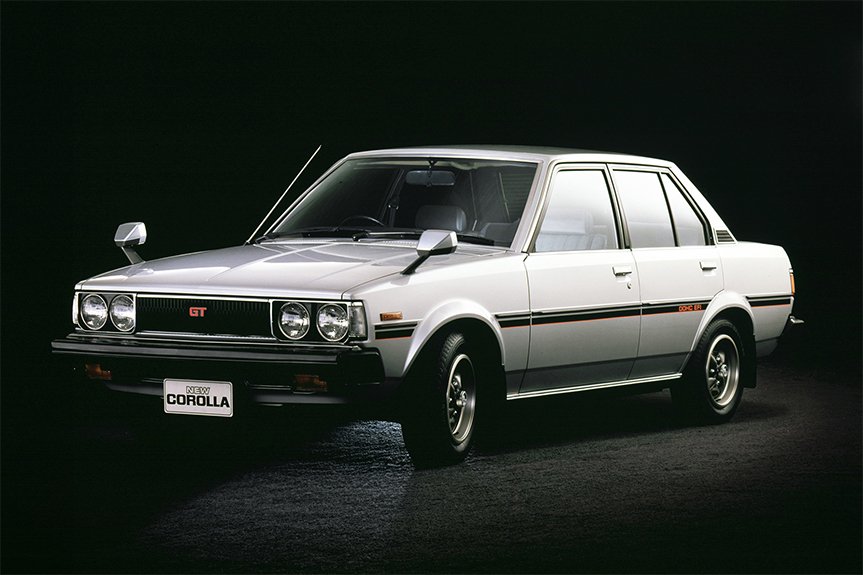
Maintaining the front engine rear drive (FR) layout of previous generations, the fourth generation extended the wheelbase by 30 mm to achieve a more spacious interior. With its memorable straight lined rectangular form, this generation was the only one in the Corolla’s history to feature four round headlights. With the 1.3 liter 4K-U and 1.5 liter 3A-U engines as the main engines for the lineup, a 1.6 liter 2T-GEU DOHC engine was also added. This 1.6 liter engine had previously only been installed in the Levin sports model, but it was also added to the four-door sedan and hardtop models for this generation. This 1600GT model became popular as a compact sports sedan, and was also used extensively in rallies.
1979: Overcoming the Second Oil Crisis and Entering the 80s
This year saw the arrival of the second oil crisis, but the experience of the first crisis meant that major disorder was avoided. Rather, there was an overall mood of optimism on the eve of the 1980s, during which many new hit products were created and introduced, such as the Walkman and the pull-up bar. The word “nowy” became popular in Japanese usage to describe anything trendy. This was also the year when the Space Invaders arcade game became so popular that it gave rise to new social problems such as game addiction and wasteful spending by children. The Space Invaders game also gave rise to the “Nagoya Attack” play technique which became famous among gamers.
The Fifth Generation Corolla: A Major Shift to FF and the Birth of the FR “86”

The fifth generation Corolla saw a major shift from the front wheel rear drive (FR) layout to the front wheel front drive (FF) layout. The most notable benefit of the change to FF was the achievement of a major expansion in interior space. In addition to the four-door sedans, the new body lineup also featured a convenient five-door model that could be used much like a mini wagon. This was called the “liftback.” A new 1.8 liter diesel engine was also added to the existing 1.3, 1.5, and 1.6 liter engines. The 1.6 liter engine featured the first electronically controlled four-speed automatic transmission for the class. The coupe model Levin also notably featured the original FR layout. The legendary “86” car was born with the arrival of the “AE86” model, which featured a newly developed 4A-G model 1.6 liter DOHC engine.
1983: The 1980s was a Time of Rising Expectations
Though the bubble economy had not yet begun, society was filled with a sense of rising momentum with the expectations toward the arrival of the new era of the 1980s. The opening of Tokyo Disneyland captured the imagination of the Japanese people, and it was the first Disney park to open outside of the United States. The park attracted countless visitors from the very beginning, thus positioning it as one of the top leisure destinations in Japan. The year also saw the rise in popularity of the “cafe bar.” This type of establishment became popular as a dating spot and as both an accessible bar and as a cafe where one could drink alcohol, as its name suggests. This was also the year which saw the release of the NES, known as the Family Computer, or “Famicom,” in Japan.
The Sixth Generation Corolla: A High-Quality Sedan for the World
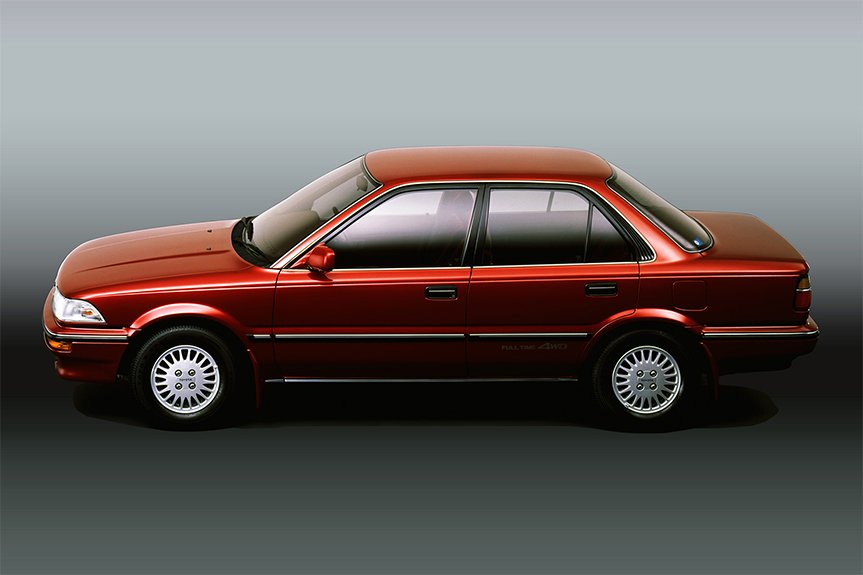
Changes in the sixth generation of Corolla demonstrated how the rise of the bubble economy and the boom in the so-called “high society” luxury cars in Japan had affected the Corolla class of cars. Based on a theme of “a high-quality global sedan that reaches beyond its class,” the lineup aimed to increase the perceived rank of the Corolla greatly. However, this was backed up by actual improvements in material quality, including both the interior and exterior designs. The interior in particular featured a level of quality normally seen in cars one rank higher. The engine lineup featured four different models, including the 1.3, 1.5, and 1.6 liter engines as well as the 1.8 liter diesel engine. The top grade GT model offered options such as digital meters and the TEMS electronically controlled suspension. The sixth generation became extremely popular, reaching over 300,000 cars in annual sales in Japan by 1990.
1987: The Excitement of the Bubble Economy
The bubble economy peaked in 1987 with the rise in land prices. In this year, the national rail system was divided into the seven companies which made up the Japan Rail. The stock market continued to rise, and the bubble economy culminated in the record rise in the stock price of NTT to 3.18 million yen in just over two months from the initial public offering without stopping at the opening price due to the massive demand in buyers. The word “Bubble” itself became the popular word of the times. Other terms popularized at the time were terms of abundance, such as “asa-shan,” meaning the luxury of shampooing in the morning, “bodycon,” describing body-conforming dresses which were popular at the time, and “couch potato” – a term that was borrowed from American slang. Another phrase popular at the time was “hanakin,” referring to going out on Friday nights, which was a new kind of behavior at the time with the then recent spread in the two-day weekend system. This was also the year which saw the launch of the first smaller handheld cell phones.
